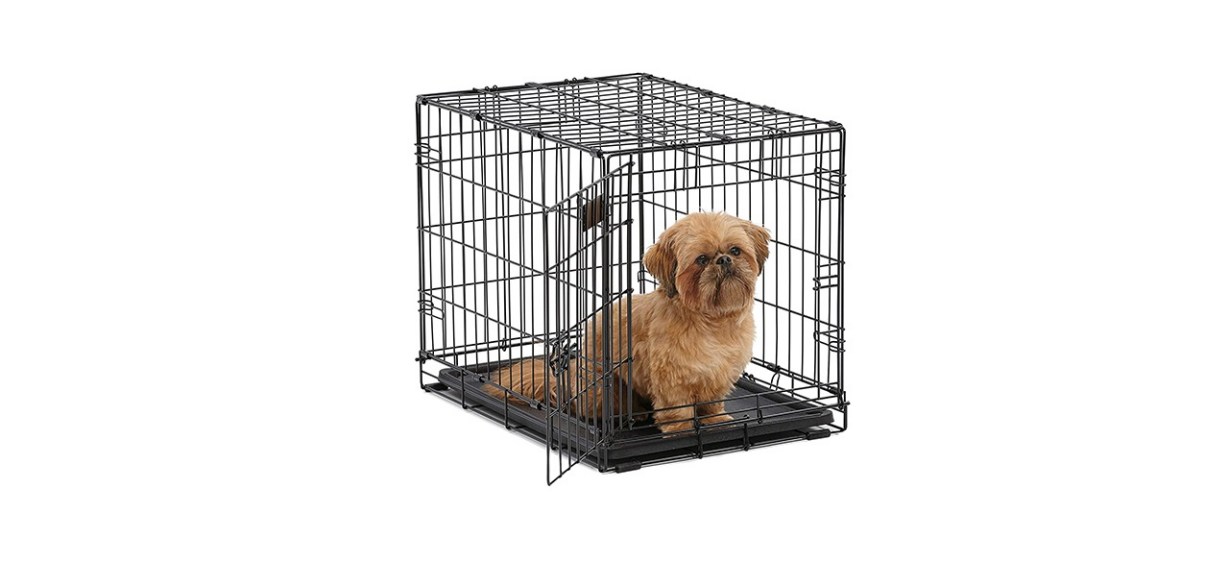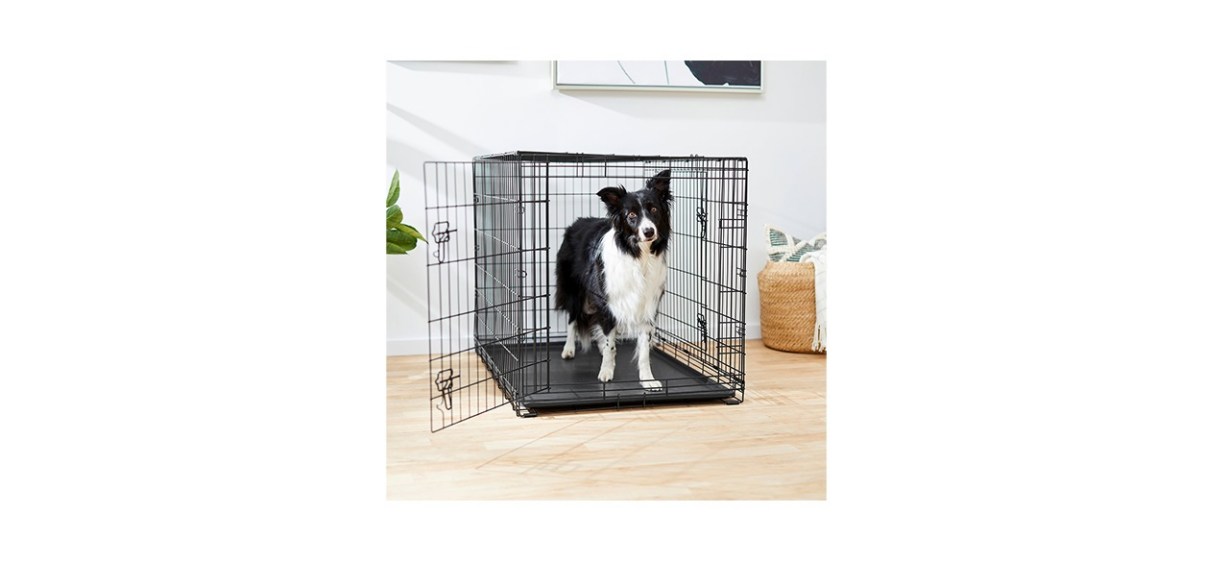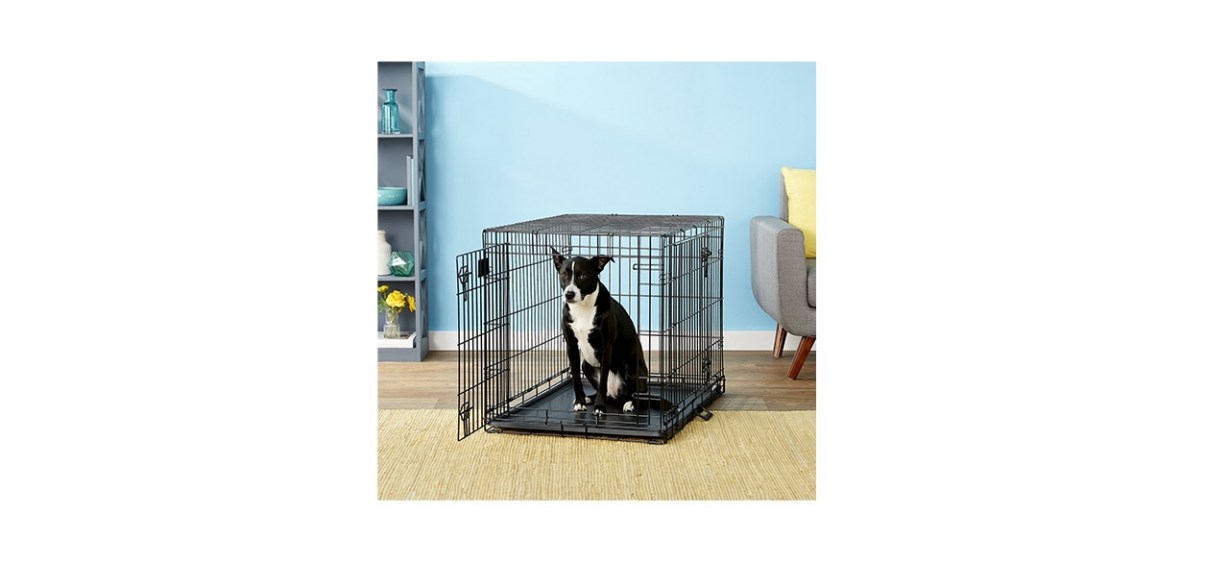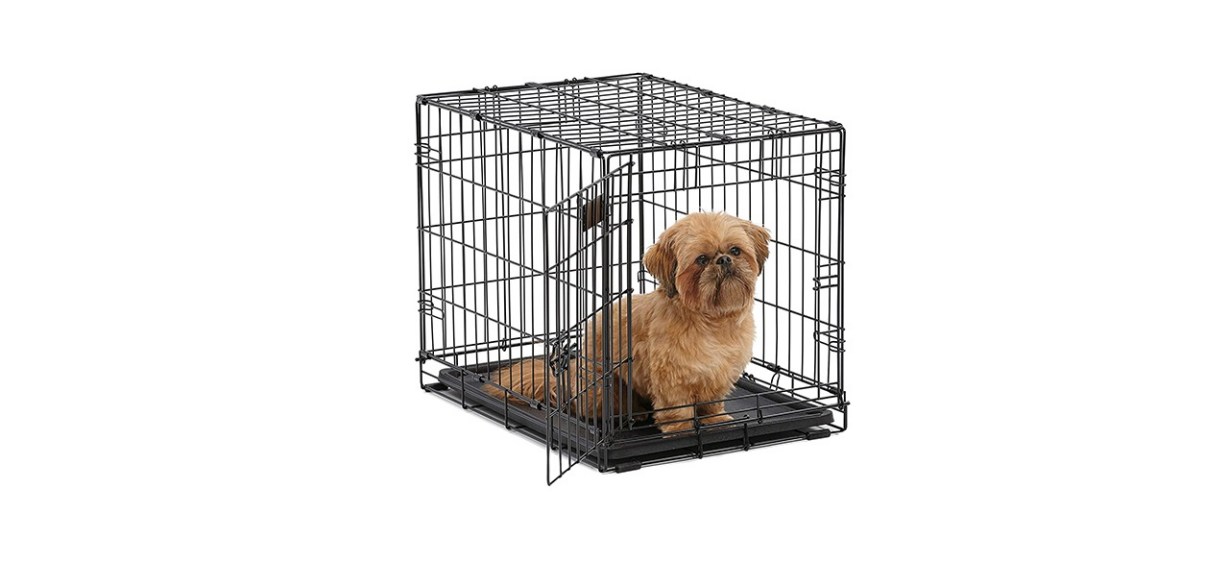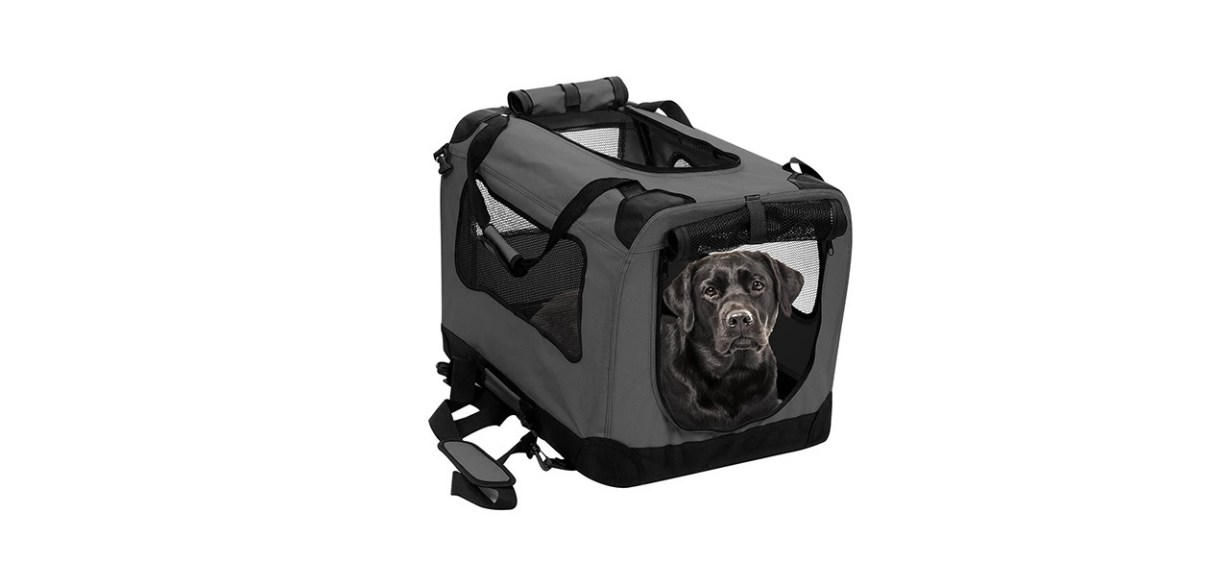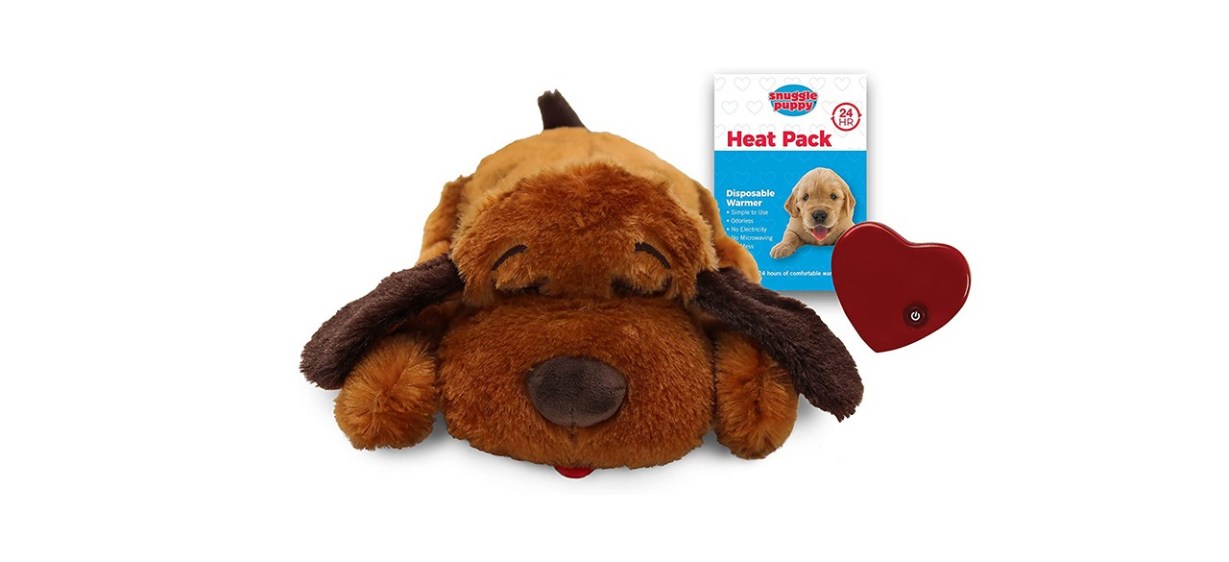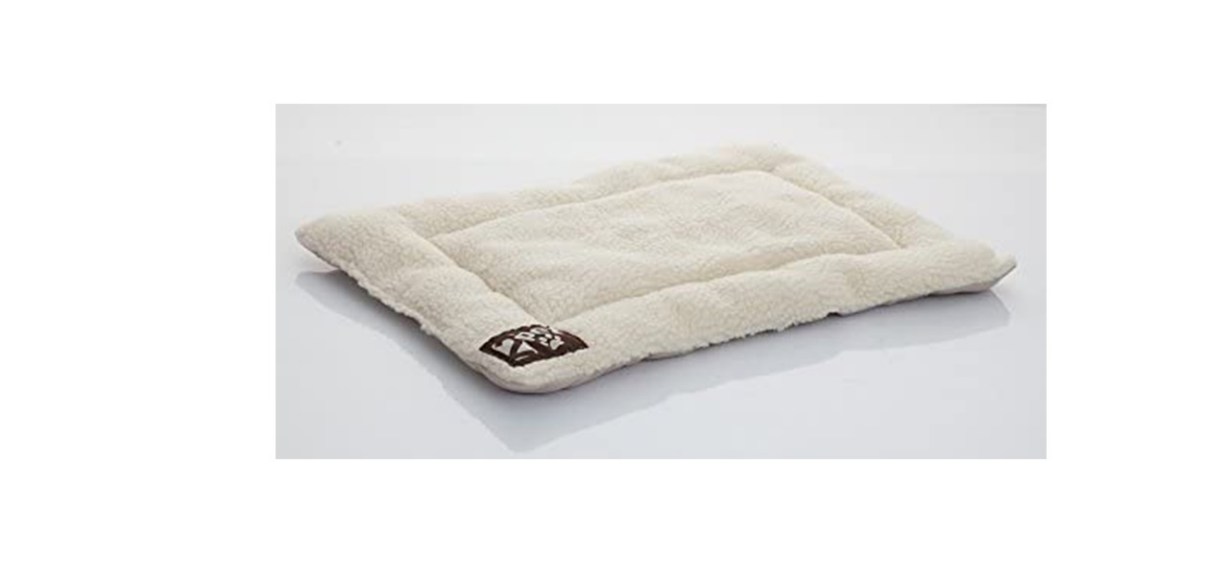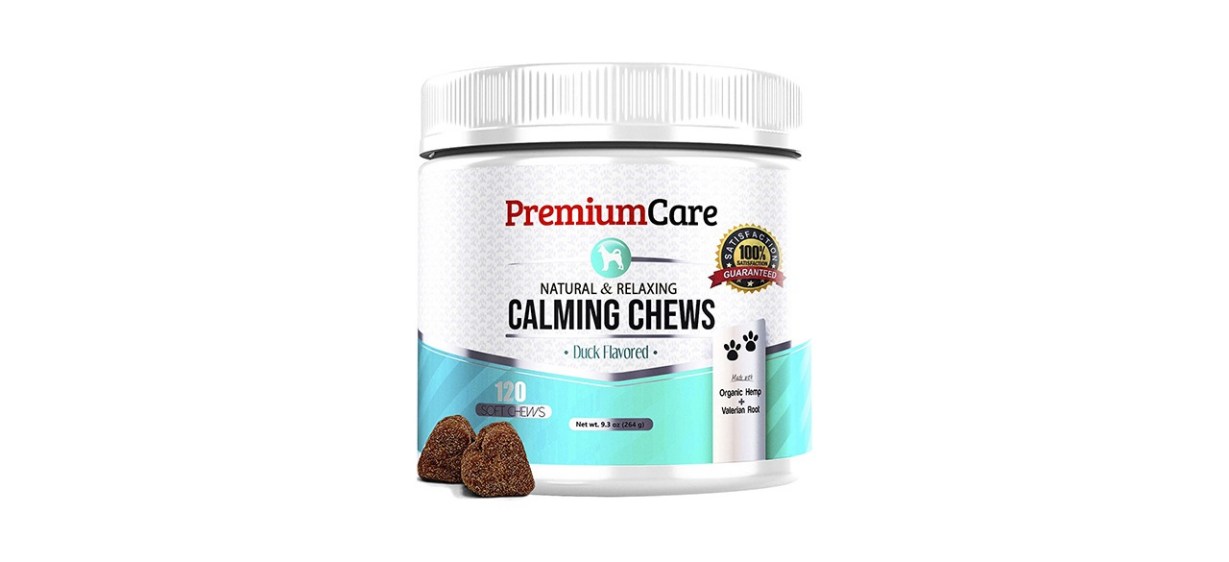Steps to crate train a puppy
Every puppy is different, so the way you crate train them will vary based on their age, temperament and preferences. It can take a few weeks to several months to fully crate train a puppy. And, though it does take persistence and a bit of patience, the benefits of crate training are worth it in the end. If you’re ready to get started, here’s the best way to crate train your new puppy.
Choosing the right crate
Before starting crate training a puppy, you need to choose the right crate. Here are the main types of crates.
Collapsible crate
Collapsible dog crates are often made from soft materials, making them ideal for travel and overnight use. They’re also easy to move around or store when not needed.
Plastic crate
These crates are mostly for travel or flying. They often have dishes for food and water that attach to the crate door for easy use. If you’re trying to crate train a puppy in preparation for a long trip, this crate may be the best option since the puppy will get used to it early on.
Fabric crate
These may be collapsible or not. They usually have softer sides. The benefit of this is that they’re usually easier to move and can be less expensive than rigid crates. However, a determined puppy can scratch or tear up the sides with its teeth or claws.
Adjustable crate
These crates can be adjusted to fit the size of your puppy as it grows. This makes them convenient for those who only want to get one crate that lasts a long time. Adjustable crates are often more expensive, though.
Choose a crate that your puppy can comfortably stand up in, move around, completely turn and sleep in. If it’s too small, it could cause the puppy’s joints to cramp up or result in other injuries.
How to crate train a new puppy
Here’s the easiest way to crate train a puppy.
Step 1: Introduce the crate
Start slowly by placing an open crate in the same room as your puppy. Place a soft cushion and a couple of pee pads inside the crate. Then, give the puppy time to sniff it and get used to it being there. If you’re lucky, the puppy may go inside on its own and lay down or sleep.
Step 2: Create a positive association
Whether your puppy likes the crate or not, the next step is to build some positive associations. You can do this by adding some of the puppy’s favorite treats to the inside of the crate or giving it praise and pets when it goes inside. Always reward the puppy whenever it does enter the crate.
Step 3: Add food and water
The crate you use for training should be large enough to accommodate food and water dishes. Once the puppy is comfortable enough to go inside the crate on its own, put a small bowl of food and another one for water into the crate. Start by placing the bowls near the entrance of the crate. Make sure the entrance to the crate is completely open, as this can help more nervous puppies feel comfortable being near or inside it.
As the puppy starts to get used to eating and drinking inside the crate, push the bowls a little further back each day. Eventually, you’ll get to the point where the puppy needs to go all the way inside the crate to eat or drink.
Step 4: Close the crate door
Once your puppy is used to laying down inside the crate and eating or drinking in it, it’s time to close the crate door. Start with five or 10-minute intervals. Let them out if the puppy becomes upset and starts to whine or scratch heavily at the crate. Also, reduce the time the door is closed in the future.
Repeat this for a week or even up to a month. In many cases, puppies will get used to the crate within the first couple of days. But if that’s not the case with yours, it’s better to be patient and take your time training the puppy to use the crate than it is to stress them out unnecessarily.
Step 5: Walk away
As you increase the puppy’s time in the crate, it’s time to start changing the routine. Once the puppy is comfortably in the crate, go to another room for 10 or 15-minute intervals. Then, return to the crate and sit beside it without speaking or acknowledging the puppy. Do this a few times each day for longer and longer periods.
If your puppy is doing well at this stage, start leaving the house for 15 to 25 minutes at a time. That way, the puppy won’t be able to smell, hear or see you. At this point, you may want to add a puppy cam to monitor your pet and make sure it’s doing okay. If your puppy is still a little anxious, put a few of its favorite toys or a used shirt in the crate with it.
Step 6: Teach commands
This part isn’t required, but it can make crate training easier for some people. Teach your puppy a command that tells it to go to the crate. This could be something like “crate” or “bed.” It could also be a certain gesture you make. Whatever it is, reward your puppy with praise or treats every time it follows the command correctly.
Step 7: Change the routine
Dogs are smart creatures, so there’s a good chance your puppy will start to associate being in the crate with certain times of the day. So, if you want to train the puppy fully, it’s a good idea to change up when you leave them in the crate.
Step 8: Overnight training
One of the advantages of crate training a puppy is that it also helps with general house training. After all, puppies don’t like to soil the same area they eat or sleep.
If you need to leave your puppy in the crate for long periods, say overnight or while you’re at work, place the crate near your bed or out in the hall. Make sure the crate is close enough to where you sleep so that you can hear the puppy if it really needs to go out to the bathroom.
Common crate training problems and solutions
Here are a few of the most common issues with crate training.
- Some dogs, especially new puppies and older dogs, experience separation anxiety when left alone too long. If they’re in a hard-sided crate, they may end up hurting themselves to escape. Use a soft crate to prevent this. Also, use some calming dog products to help overly anxious dogs calm down.
- Many people don’t like hearing their puppy whine or scratch at the crate. So, they often end up comforting the puppy through the crate or even letting it out. This makes crate training much take longer than it needs to. Unless your puppy is extremely upset, ignore them until they calm down. Once they calm down and the time has passed, reward them for good behavior.
- Some owners make a big deal over leaving their puppy in a crate, even if it’s only for a few minutes. This can make the puppy more upset or view being in the crate negatively. Avoid this by leaving in a very calm, direct manner.
What you need to buy to crate train a puppy
Midwest Homes for Pets Crate
With a polyester and cotton blend, this crate is durable, comfortable and can help small dogs and puppies feel more secure while inside it. It also comes with a fabric protector that prevents stains and odor buildup.
Sold by Amazon
Frisco Fold & Carry Double Door Collapsible Wire Dog Crate
This collapsible dog crate is easy to assemble and has two convenient openings, with one the side and one at the front. It also comes with a durable, removable tray.
Sold by Chewy
MidWest LifeStages Double Door Collapsible Wire Dog Crate
This dog crate comes in several sizes, making it perfect for crate training any breed dog. It comes with a divider, which helps with growing puppies. Plus, it’s easy to carry and transport from place to place.
Sold by Chewy
MidWest Homes for Pets iCrate
This leakproof dog crate comes with a divider for growing puppies and has both a double and a single door for easy access. It also has very secure latches, so you can leave the puppy for longer periods without fear of it getting out.
Sold by Amazon
2PET Folding Soft Dog Crate
This soft crate is ideal for crate training puppies or dogs weighing up to 15 pounds for air and car travel. It’s easy to set up, put away and wash. Plus, it has mesh windows for ventilation and a strong frame.
Sold by Amazon
SmartPetLove Snuggle Puppy Heartbeat Stuffed Toy
Made with anxious puppies and dogs in mind, this stuffed toy acts as a calming aid and stress reliever. It has a pulse you can turn on and off to provide comfort to puppies that need it, whether they’re in the crate or not.
2PET Crate Pad
Great for dogs and cats alike, this plushy puppy mat is 20 inches long and works well in most hard-sided dog crates. Warm and comfortable, it’s a great accessory to any crate.
Sold by Amazon
Premium Care Calming Chews for Dogs
These calming treats help puppies and adult dogs calm down. They also reduce aggression between dogs and can help with crate training.
Sold by Amazon
Want to shop the best products at the best prices? Check out Daily Deals from BestReviews.
Sign up here to receive the BestReviews weekly newsletter for useful advice on new products and noteworthy deals.
Angela Watson writes for BestReviews. BestReviews has helped millions of consumers simplify their purchasing decisions, saving them time and money.
Copyright 2022 BestReviews, a Nexstar company. All rights reserved.


